Flowers have always been a symbol of beauty, love, and hope. They have been used to express our deepest emotions and to celebrate life’s most meaningful moments.
From the majestic beauty of the Wild Rose to the whimsical charm of the Windflower, each flower has its own unique story to tell and its own place in the natural world.
In this blog post, we will be exploring the world of “Flowers That Start With W” and discovering the hidden treasures and fascinating secrets of these remarkable blooms.
Whether you’re a lover of flowers, a curious soul, or simply looking for some inspiration, this journey is bound to captivate your imagination and leave you with a newfound appreciation for the wonder and beauty of the natural world.
So, let’s take a step into this magical world of flowers that start with W and discover the significance and relevance they hold for us all.
Keep Reading:
- Flowers That Start With R
- Flowers That Start With S
- Flowers That Start With T
- Flowers That Start With U
- Flowers That Start With V
List Of Flowers That Start With W
1. Wood Lily
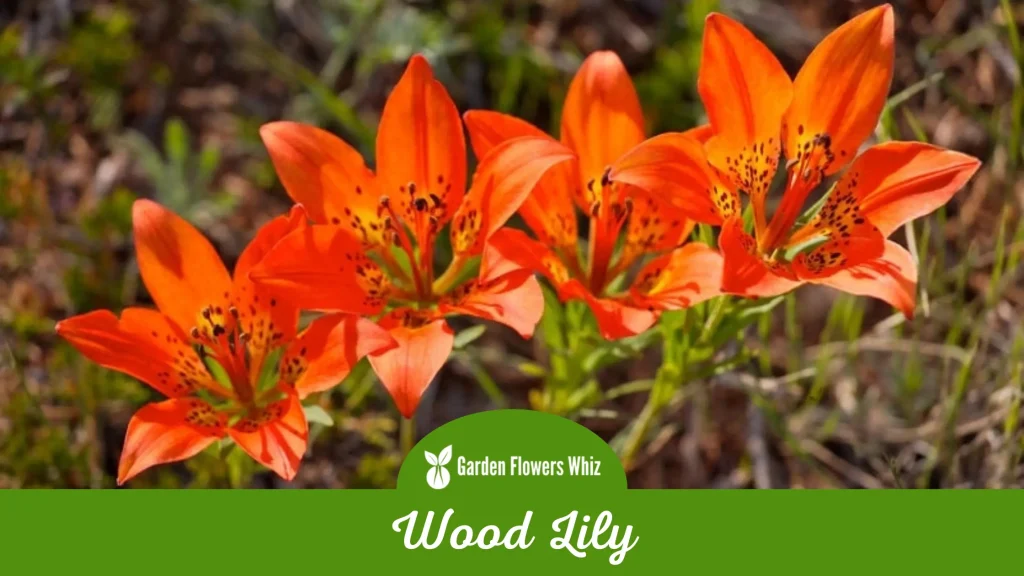
The Wood Lily, also known as the western wood lily or prairie lily, is a stunning wildflower that is native to North America. It is a member of the lily family and is known for its striking, bright orange-red flowers that bloom in early summer.
The Wood Lily grows up to two feet tall and has narrow, grass-like leaves that form a rosette at the base of the stem. This flower is well-adapted to the prairies and woodlands of North America and can tolerate a wide range of soil types, including sand, loam, and clay.
It is also able to withstand drought conditions and prefers to grow in areas with plenty of sunlight. The Wood Lily is an important part of the ecosystem, providing food and habitat for a variety of wildlife such as bees, butterflies, and hummingbirds.
In addition to its ecological value, it is also a popular garden flower due to its unique beauty and ability to attract pollinators. Despite being relatively easy to grow, the Wood Lily is a threatened species in many areas and requires protection to ensure its continued existence in the wild.
2. Wood Anemone
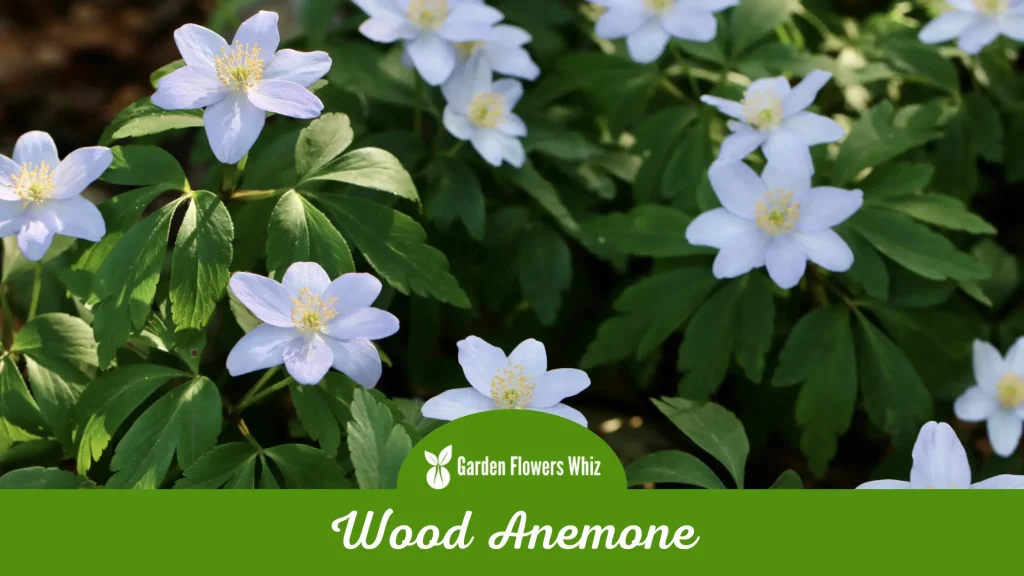
The Wood Anemone, also known as the windflower, is a delicate and enchanting wildflower that is native to Europe, Asia, and North America.
This early-blooming perennial plant is a member of the buttercup family and is named for its resemblance to anemone flowers, which are often called “windflowers” due to their tendency to sway in the breeze.
The Wood Anemone grows to be about six to nine inches tall and has delicate, white or pinkish flowers that bloom in early spring. These flowers are composed of six to nine petal-like segments that surround a center of yellow stamens, creating a charming and dainty appearance.
The plant also has deeply lobed leaves that are green and slightly hairy, giving it an attractive and distinctive look. In the wild, the Wood Anemone prefers to grow in damp, shaded woodland areas with rich soil.
It is an important food source for many pollinators, such as bees and butterflies. In gardens, it is a popular choice for rock gardens and naturalized woodland areas due to its low-maintenance and visually appealing nature.
3. Willow-leaved Sunflower
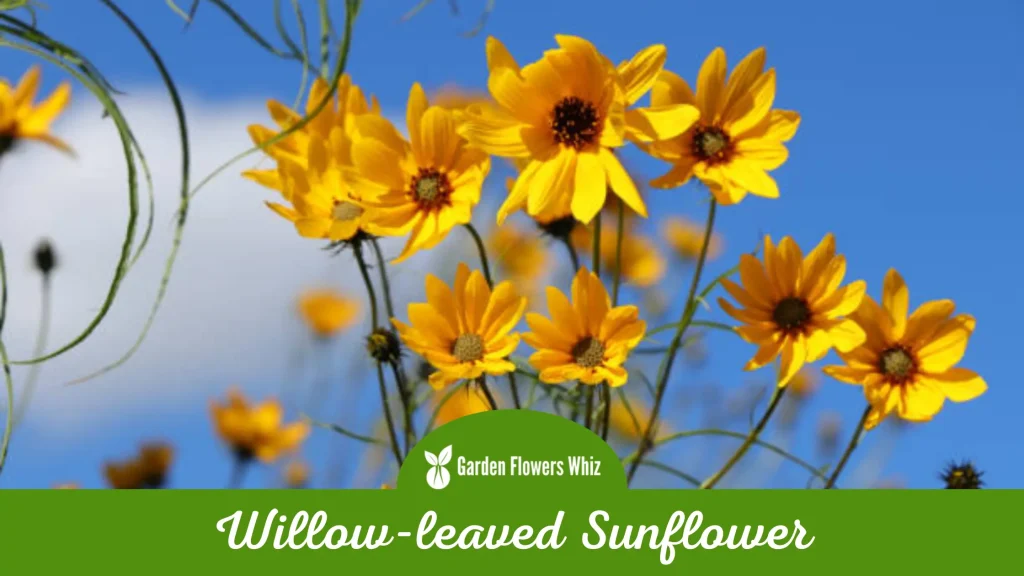
The Willow-leaved Sunflower, also known as the Narrow-leaved Sunflower, is a tall and impressive wildflower that is native to North America.
It is a member of the aster family and is named for its willow-like leaves, which are long and narrow, and its bright yellow petals that resemble those of a sunflower.
The Willow-leaved Sunflower can grow to be up to six feet tall and produces multiple flowers on each stem. These flowers are composed of yellow petals that surround a central disc of brownish-yellow florets, giving the plant a striking appearance.
The willow-like leaves are long and narrow, providing an interesting texture that contrasts with the flowers. This wildflower prefers to grow in moist, fertile soil in full or partial sunlight, making it a common sight along stream banks and in meadows.
It is also an important food source for pollinators, such as bees and butterflies. In gardens, the Willow-leaved Sunflower is a popular choice for adding height and color to flowerbeds and borders.
4. Willow Shrub

The Willow Shrub, also known as the Salix, is a group of flowering woody plants that are found in various parts of the world, particularly in wetland and riparian habitats.
They are part of the willow family, and the genus includes over 400 different species. The Willow Shrub is characterized by its narrow, elongated leaves and flexible, often drooping branches.
The shrub has tiny flowers that appear in the early spring before the leaves emerge. The flowers are inconspicuous and are often found in catkins, which are clusters of male or female flowers.
These shrubs grow in a variety of soils but prefer moist, well-drained soils. They also have an impressive ability to tolerate waterlogged soils and periodic flooding.
The Willow Shrub is important to ecosystems as it provides a habitat for a variety of wildlife, including birds and insects. It is also commonly used for erosion control and is planted along riverbanks and in wetland areas for that purpose.
In addition to its ecological value, the Willow Shrub has a variety of uses in horticulture, medicine, and art. The Willow Shrub is a fascinating and versatile plant with a rich history and many practical applications.
5. Wild Strawberry
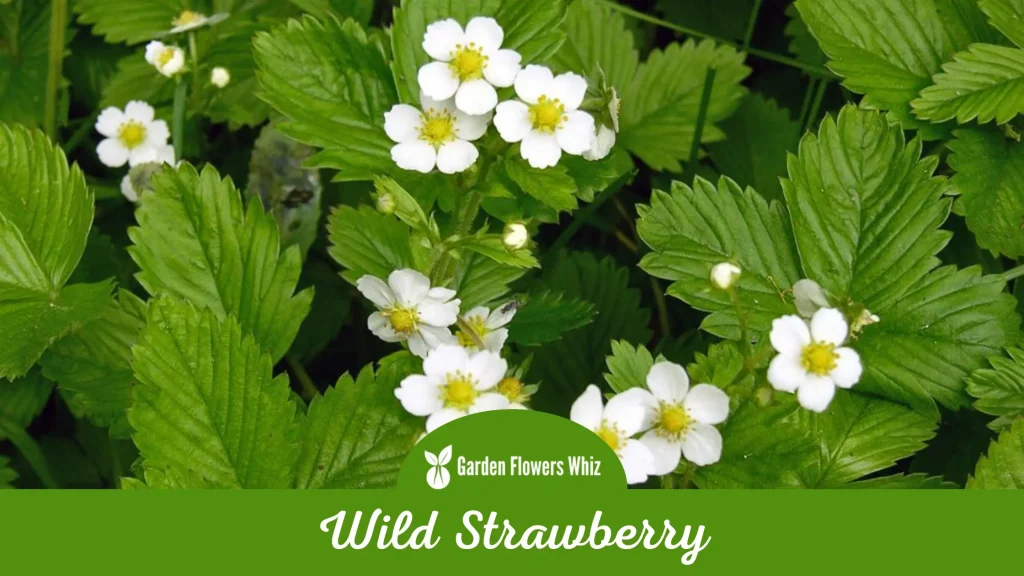
The Wild Strawberry, also known as the Woodland Strawberry, is a small and delicate plant that produces delicious, bright red berries.
This plant is native to temperate regions of the world and can be found in a variety of habitats, including woodlands, meadows, and fields.
The Wild Strawberry typically grows to be only a few inches tall and has three-lobed, toothed leaves that are a light green color.
The plant produces small white flowers in the spring, which are followed by the familiar tiny, sweet, and juicy red berries. Many animals, including birds, squirrels, and other small mammals, eat the fruit.
Wild Strawberries are highly valued for their delicious taste and nutritional value and are often used in jams, desserts, and other culinary applications.
They are also rich in vitamin C and other antioxidants. The Wild Strawberry is a charming and useful plant that adds beauty and flavor to a variety of settings.
6. Wild Indigo
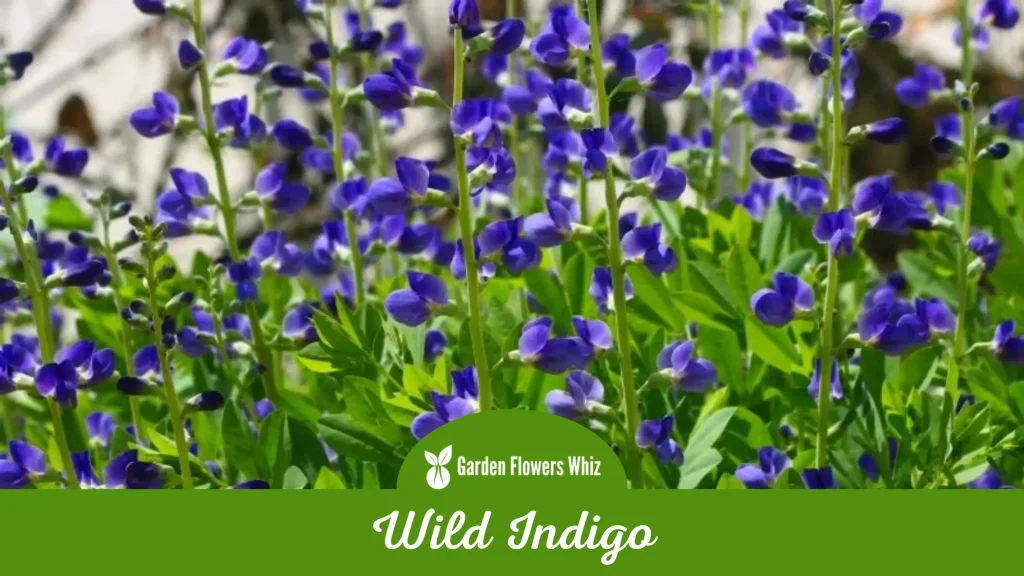
The Wild Indigo, also known as the Baptisia, is a beautiful and unique flowering plant native to North America. It is a member of the pea family and is named for the blue-purple or yellow flowers that resemble the shape of the pea flower.
The Wild Indigo is a perennial plant that can grow up to three feet tall and produces spikes of flowers in late spring or early summer.
The flowers are usually blue-purple or yellow and are followed by seedpods that can remain on the plant throughout the winter. The plant has distinctive blue-green foliage that persists through the summer and into the fall, making it an attractive addition to any garden.
It is also an important food source for many pollinators, such as bees and butterflies.
7. White Trumpet Pitcher Plant

The White Trumpet Pitcher Plant, also known as the Sarracenia leucophylla, is a unique and beautiful carnivorous plant that is native to the southeastern United States.
It is a member of the pitcher plant family and is named for its trumpet-shaped, white-veined leaves that are designed to trap insects.
The White Trumpet Pitcher Plant can grow to be up to three feet tall and has long, slender leaves that form a distinctive funnel-shaped structure.
The leaves are typically green with white veins but can also have red or purple coloration. The plant produces beautiful pink or red flowers in the spring and early summer, which add to its ornamental value.
This plant is a carnivorous species and uses its leaves to trap and digest insects. The funnel-shaped leaves are lined with small, downward-pointing hairs that prevent trapped insects from escaping.
The insects are then broken down by digestive enzymes in the plant’s fluid, providing the plant with nutrients that it cannot obtain from the soil.
The White Trumpet Pitcher Plant is a fascinating and unique plant that adds both beauty and functionality to any garden or natural setting.
It is also an important species to protect, as it is threatened in some areas due to habitat loss and other factors.
8. White Evening Primrose

The White Evening Primrose, also known as the Oenothera pallida, is a beautiful and delicate flowering plant that is native to the central and southwestern regions of the United States.
It is a member of the evening primrose family and is named for its large, showy white flowers that bloom in the evening. The White Evening Primrose is a perennial plant that can grow to be up to two feet tall.
It has slender, green stems and leaves that are arranged in a rosette pattern. The plant produces large, fragrant white flowers that open in the evening and close the following morning.
The flowers are pollinated by moths, which are attracted to their sweet scent and pale color.
The plant has also been used for its edible seeds and roots, which can be eaten raw or cooked. The White Evening Primrose is a lovely and useful plant that adds both beauty and functionality to any garden or natural setting.
Its fragrant flowers, delicate appearance, and medicinal properties make it a valuable addition to any landscape.
9. Wax Begonia
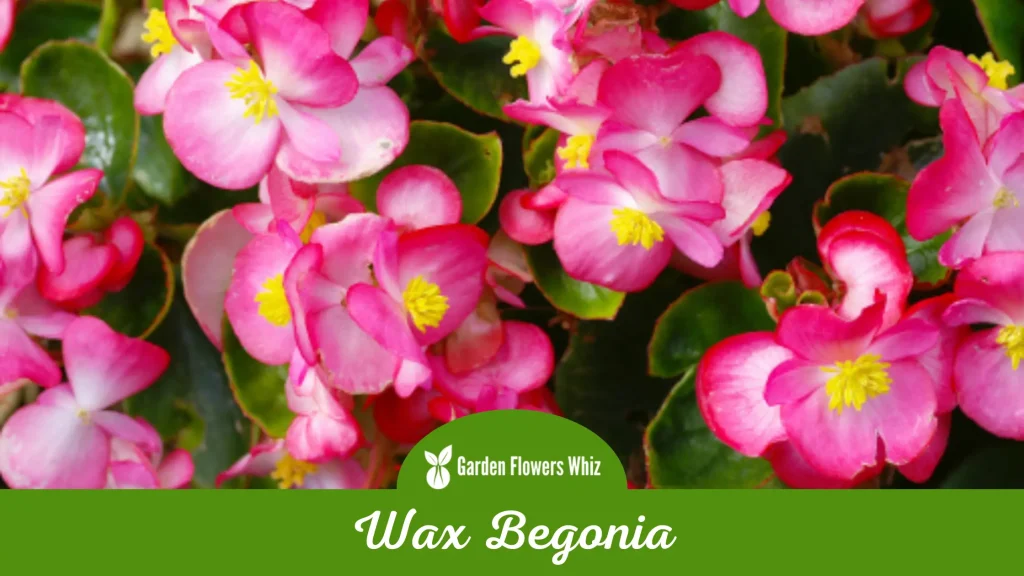
The Wax Begonia, also known as the Begonia semperflorens, is a popular flowering plant that is widely cultivated for its colorful blooms and attractive foliage.
It is native to tropical and subtropical regions of the world and is a member of the Begoniaceae family. The Wax Begonia is an annual or perennial plant that can grow to be up to one foot tall.
It has glossy, green, or bronze leaves that are often speckled with white or silver markings. The plant produces small, waxy flowers in a variety of colors, including pink, red, white, and yellow.
The flowers bloom continuously throughout the summer and fall, making the Wax Begonia a popular choice for garden beds and container plantings.
This plant is easy to grow and maintain and can tolerate a range of growing conditions, including sun or shade and various soil types. It is also resistant to many pests and diseases, making it a low-maintenance choice for gardeners.
The Wax Begonia is a versatile and attractive plant that is well-suited to a variety of landscape settings. Its colorful blooms and interesting foliage make it a valuable addition to any garden or container planting.
10. Woolly Violet
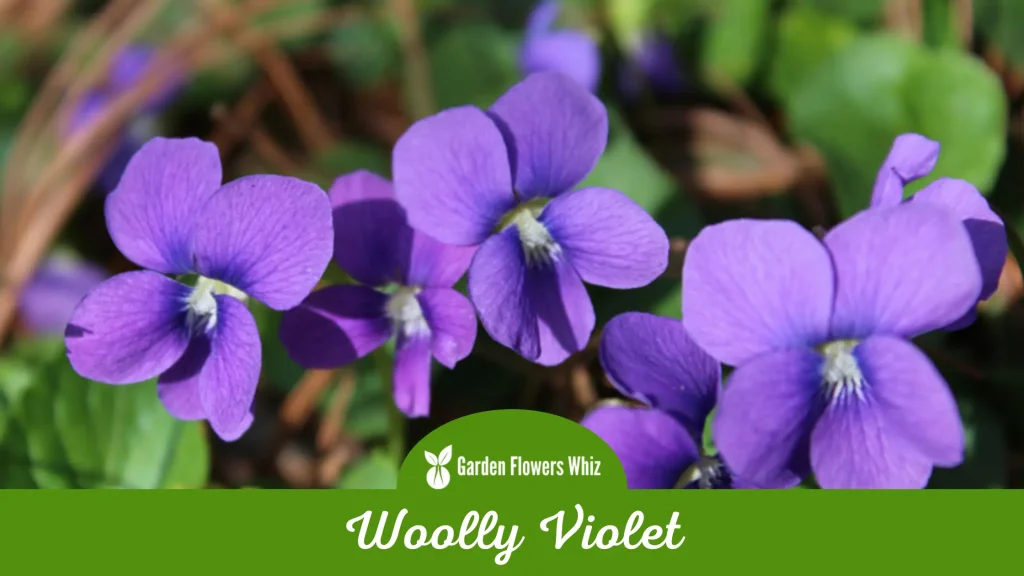
Woolly Violet, scientifically known as Viola sororia var. priceana, is a lovely wildflower that belongs to the violet family. This flower is native to eastern North America and can be found growing in open woods, along stream banks, and in damp meadows.
The name “woolly” comes from the thick, hairy texture of the leaves, which helps to protect the plant from drying out in hot weather.
Woolly violet is a small, perennial herb that grows to about 6-8 inches in height. It has heart-shaped leaves with a slightly serrated edge and produces small, delicate, blue-violet flowers with five petals in the spring.
The flowers have a sweet scent that attracts bees and butterflies, making them a popular choice for pollinator gardens. Woolly Violet is an easy-to-grow plant that requires well-drained soil and partial shade.
It can be propagated by division or from seed, and once established, it requires little care. It is a great addition to woodland gardens, rock gardens, or naturalized areas.
This plant is not only attractive but also serves as a valuable source of food for various pollinators.
11. Witch Hazel

Witch Hazel, scientifically known as Hamamelis virginiana, is a deciduous shrub or small tree that is native to North America. It is best known for its unique and fragrant yellow or red flowers, which bloom in late fall and winter, long after most other plants have shed their leaves.
The flowers are small, with four narrow petals and a delicate, spider-like appearance. Witch Hazel also produces a fruit that resembles a small, woody capsule that contains one or two black seeds.
Witch Hazel is an easy-to-grow plant that prefers moist, well-drained soil and partial shade. It can be propagated by seed or by rooting cuttings, and it is relatively low-maintenance once established.
With its unique flowers, medicinal properties, and attractive foliage, Witch Hazel is a versatile and valuable addition to any garden or landscape.
12. Wisteria
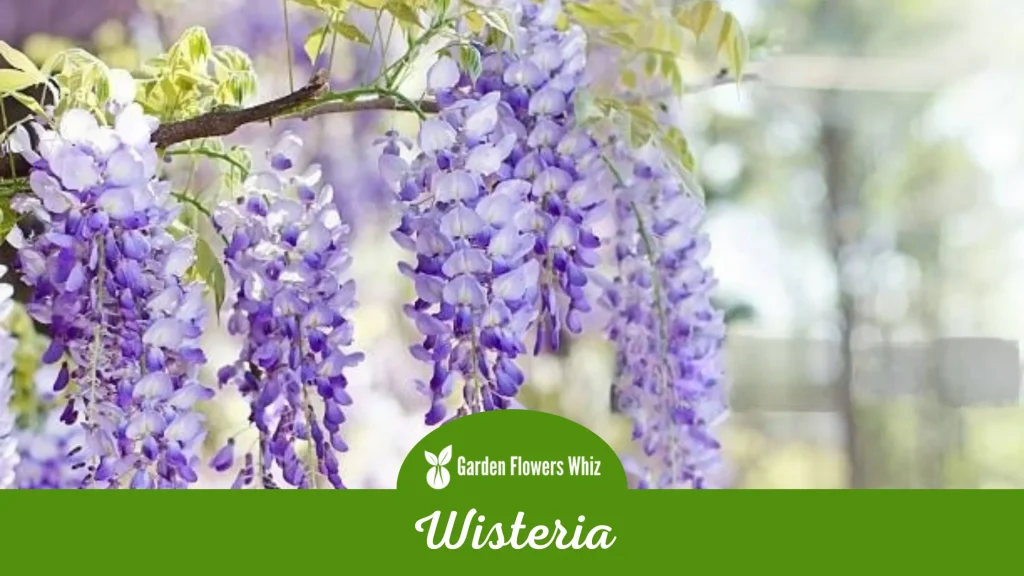
Wisteria is a beautiful and popular flowering plant that belongs to the legume family, Fabaceae. There are several species of Wisteria, but the most commonly grown are Wisteria sinensis and Wisteria floribunda.
Wisteria is known for its long, drooping clusters of fragrant, pea-like flowers that bloom in the spring or early summer and its beautiful foliage that turns golden in the fall.
The flowers come in shades of white, pink, lavender, and blue and attract a wide range of pollinators, including bees and butterflies.
Wisteria is a fast-growing vine or climbing shrub that can reach heights of up to 30 feet or more, making it a great choice for covering pergolas, arbors, and other structures.
It prefers full sun and well-drained soil and is relatively low-maintenance once established. However, Wisteria can be invasive and should be planted with care, as its vigorous growth can quickly take over other plants or structures.
In addition to its stunning flowers and attractive foliage, Wisteria has a rich cultural history and is often associated with romance, beauty, and longevity.
13. Wishbone Flower

The Wishbone Flower, scientifically known as Torenia fournieri, is a charming and delicate annual plant that is native to tropical and subtropical regions of Asia and Africa.
It is also known as the Bluewings or Clown Flower due to its strikingly vivid, multicolored blooms that resemble a butterfly or a clown’s face.
The flowers come in shades of blue, purple, pink, and white, and they have a distinctive “wishbone” shape that gives the plant its common name.
Wishbone Flower is an ideal choice for borders, containers, and hanging baskets, and it prefers partial shade and well-drained soil. It blooms throughout the summer, attracting pollinators such as bees and butterflies, and is relatively easy to care for, making it a popular choice for novice gardeners.
Wishbone Flower has been cultivated for centuries in Asia and Africa.
14. Winged Monkey Flower
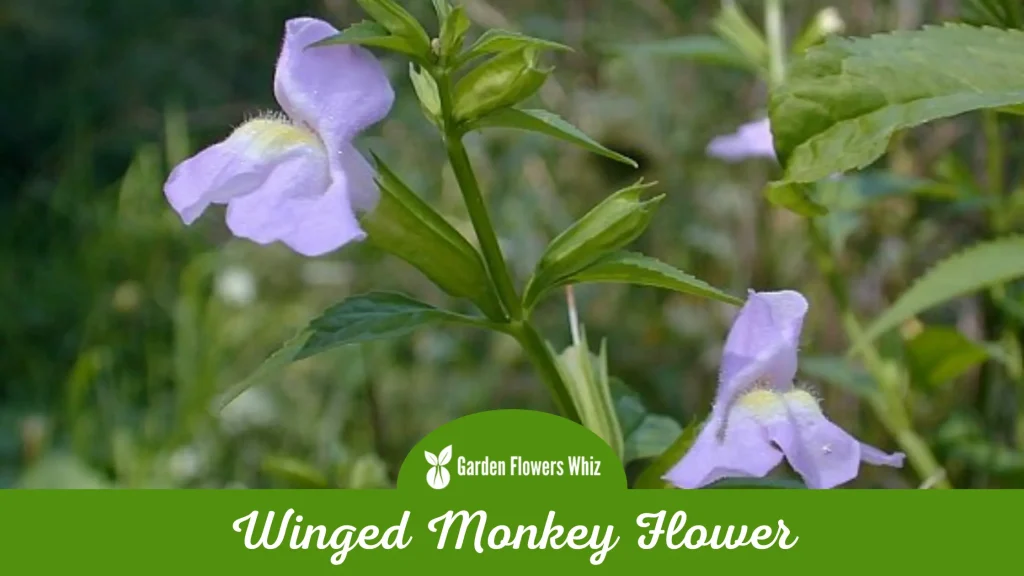
The Winged Monkey Flower, scientifically known as Mimulus alatus, is a striking and unusual perennial plant that is native to the western United States.
It is also known as the Sharpwing Monkey Flower due to the distinctive wing-like structures on its stems. The plant grows up to 3 feet in height and has small, tubular flowers that come in shades of pink, yellow, and orange and have speckled markings that resemble monkey faces.
Winged Monkey Flower prefers moist, well-drained soil and partial to full sun. It blooms in the late spring or early summer, attracting pollinators such as bees and butterflies.
It is relatively easy to care for, making it a great choice for gardeners looking to add a unique and eye-catching plant to their landscape. The Winged Monkey Flower has been used for medicinal purposes by Native American tribes for centuries.
15. Willow Bell
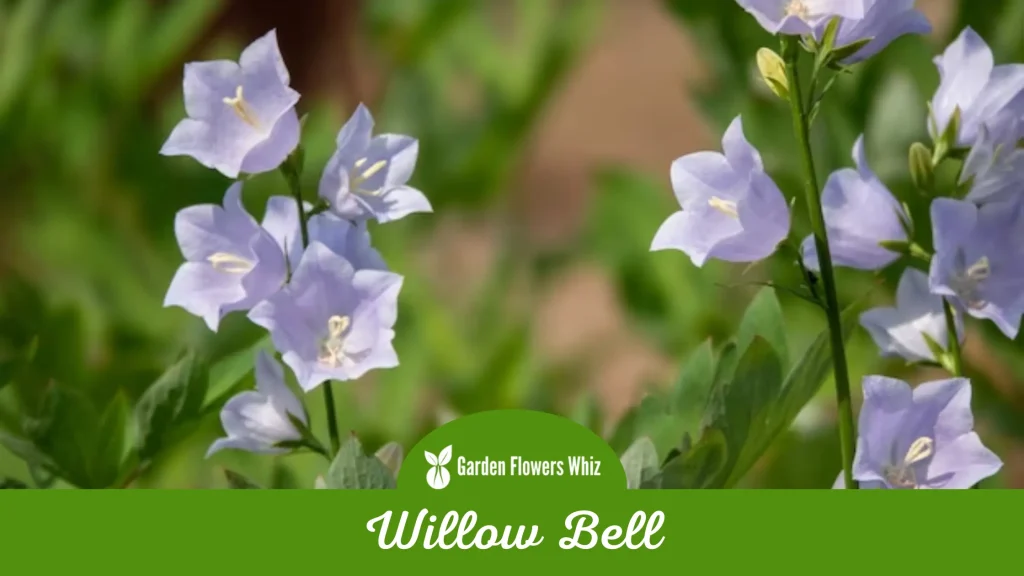
16. Wild Violet
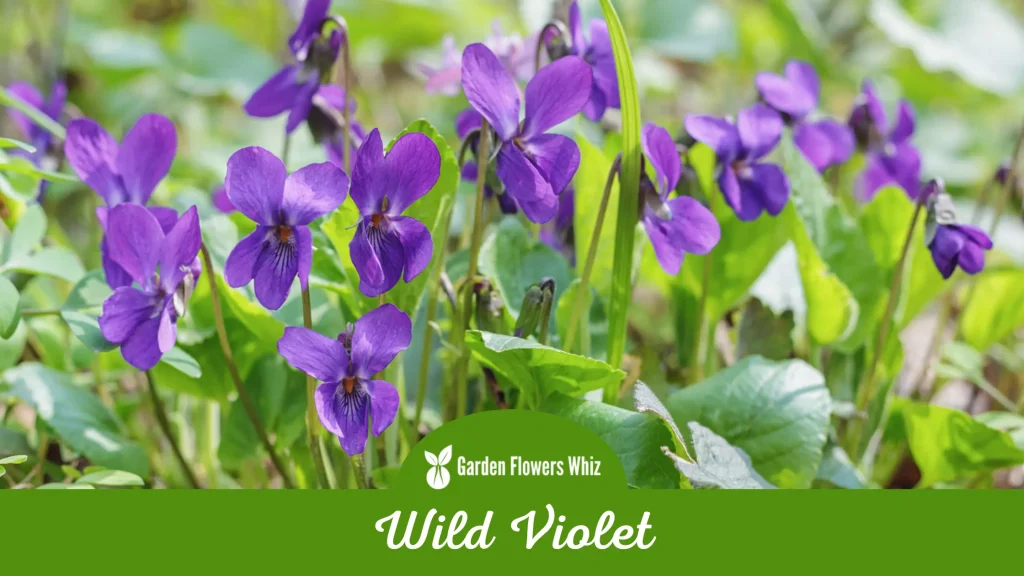
Wild Violet, also known as Viola odorata, is a delicate and charming perennial flower that is widely distributed across North America, Europe, and Asia.
This plant belongs to the family Violaceae and is often found in damp areas such as woodlands, meadows, and streams. The wild violet is a small plant that grows up to six inches tall with small, heart-shaped leaves and a variety of colorful flowers that bloom in shades of purple, blue, and white.
The flowers of the wild violet are quite striking, with five petals that radiate from the center and a distinct spur at the base. The flowers also have a lovely fragrance, which makes them a popular choice for use in perfumes and potpourri.
The wild violet is a charming and versatile plant that has captured the hearts of many gardeners, herbalists, and nature enthusiasts.
17. Wild Rose

The Wild Rose, also known as Rosa acicularis, is a species of flowering shrub that is native to North America, particularly in the northern regions.
It is a hardy and vigorous plant that can grow up to six feet tall and four feet wide. The Wild Rose produces lovely, fragrant flowers that bloom in shades of pink and white.
These blooms are popular among gardeners and florists alike and are often used in bouquets and arrangements. In addition to its aesthetic appeal, the Wild Rose has a long history of use in traditional medicine.
Its resilience and adaptability make it a popular choice for gardens and landscaping projects, while its medicinal properties have been valued for centuries.
18. Whirling Butterflies
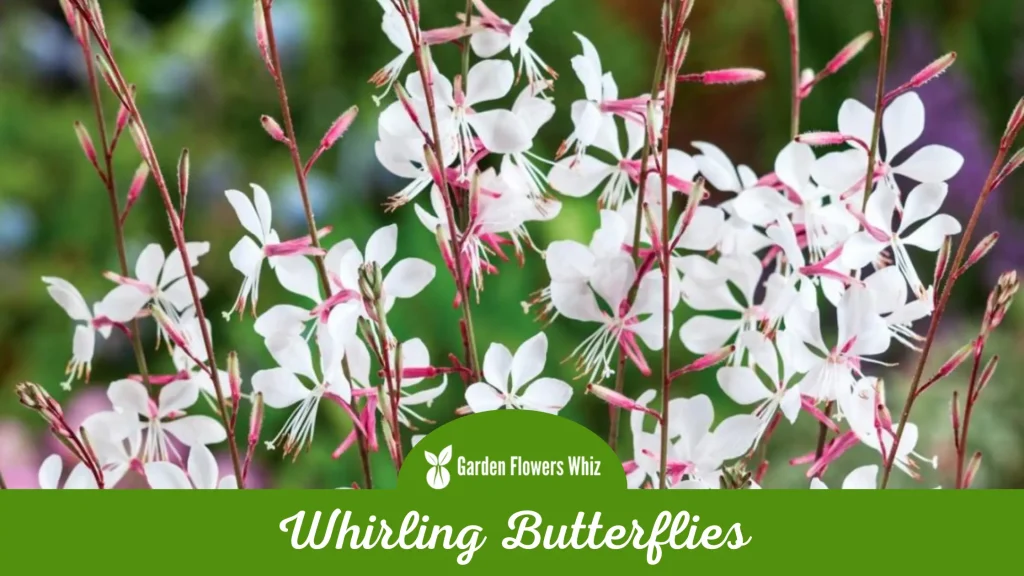
Whirling Butterflies, scientifically known as Gaura lindheimeri, is a lovely and delicate perennial flower native to North America. This plant is aptly named for the way its long, slender stems and delicate flowers move in the wind, resembling a group of butterflies fluttering in the breeze.
The Whirling Butterflies is a hardy and low-maintenance plant that can grow up to three feet tall and wide, making it a popular choice for gardens and landscaping.
The flowers of the Whirling Butterflies are small and delicate, with four petals that resemble tiny white or pink butterflies. The flowers bloom continuously throughout the summer, adding a touch of beauty and whimsy to any garden.
Additionally, the Whirling Butterflies are a popular choice for pollinator gardens, as it attracts bees, butterflies, and other beneficial insects with their nectar-rich blooms.
In addition to its aesthetic appeal, the Whirling Butterflies have a range of practical uses.
19. Whipple’s Cholla
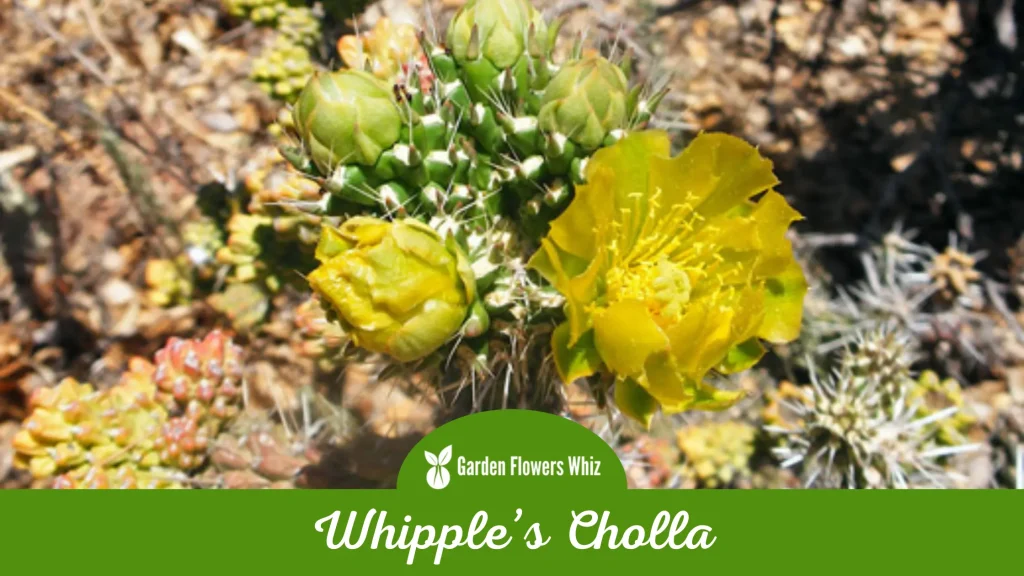
Whipple’s Cholla, also known as Cylindropuntia whipplei, is a unique and striking cactus species native to the southwestern United States and northern Mexico.
This cactus is a slow-growing plant that can reach up to ten feet tall and four feet wide. It has cylindrical, segmented stems covered in sharp spines and small, yellowish flowers that bloom in the spring and summer.
The Whipple’s Cholla is a hardy, drought-tolerant plant that can survive in harsh desert environments. It is an important food source for a variety of animals, including birds and desert rodents.
Additionally, some indigenous cultures have traditionally used the stems of Whipple’s Cholla for medicinal purposes. Despite its impressive stature and rugged appearance, the Whipple’s Cholla requires careful handling due to its sharp spines.
Its unique form and striking blooms make it a popular choice for xeriscaping and desert gardens.
20. Weigela

Weigela is a popular flowering shrub that is native to East Asia and belongs to the family Caprifoliaceae. This shrub is widely grown for its attractive foliage and striking trumpet-shaped flowers that bloom in late spring and early summer.
Weigela shrubs come in a variety of cultivars with different foliage colors, from green to variegated yellow or purple. The flowers can be pink, white, or red and are attractive to hummingbirds and other pollinators.
Weigela shrubs are easy to care for and can adapt to a variety of growing conditions, from full sun to partial shade. They can grow up to six feet tall and wide, making them a popular choice for borders, hedges, and foundation plantings.
Additionally, some cultivars of Weigela are known for their long blooming period, adding a splash of color to the garden for several months.
21. Wedelia
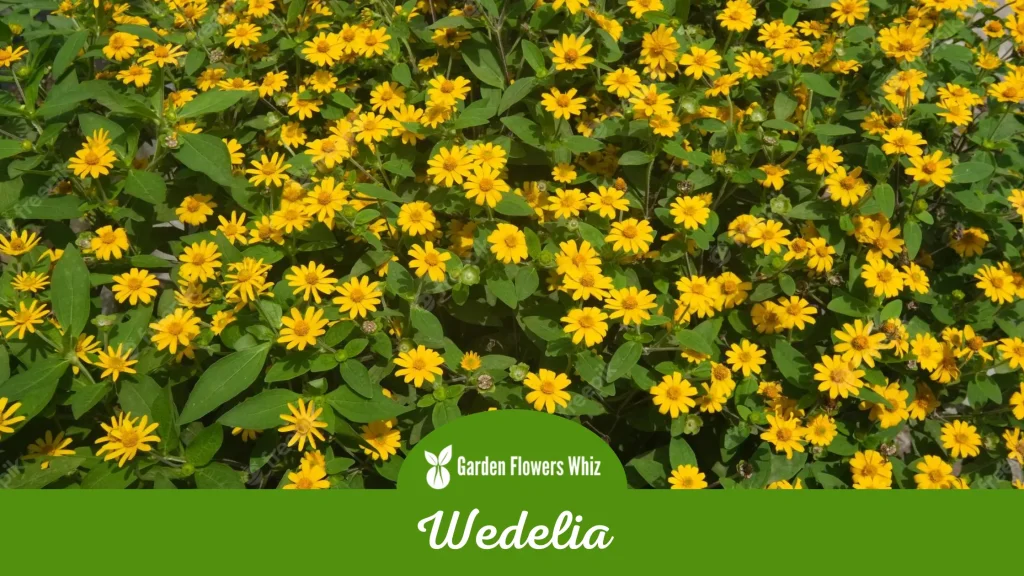
Wedelia is a genus of flowering plants in the family Asteraceae that includes around 100 species of annual and perennial herbs, shrubs, and climbers.
These plants are native to tropical and subtropical regions of the Americas, Africa, and Asia. One of the most popular species is Wedelia trilobata, also known as creeping oxeye, which is a low-growing, mat-forming perennial that is prized for its cheerful yellow daisy-like flowers and its ability to cover large areas of ground quickly.
Wedelia plants are generally easy to grow and require little maintenance, making them a popular choice for groundcovers and erosion control.
They can be grown in a range of soils and can tolerate both drought and wet conditions. While Wedelia plants have many desirable qualities, they can also be invasive in some regions, particularly in coastal areas.
As with all plants, it is important to consider the potential environmental impact before introducing Wedelia to a new area.
22. Wax Plant

Wax Plant, also known as Hoya, is a popular tropical plant native to Southeast Asia and Australia. It is a climbing vine that can grow up to 13 feet long and is prized for its attractive, waxy leaves and fragrant, star-shaped flowers that bloom in clusters.
The Wax Plant gets its name from the thick, waxy layer that covers the leaves and flowers, giving them a glossy appearance. The flowers of the Wax Plant come in a variety of colors, including pink, white, and red, and are often fragrant, attracting pollinators such as moths and butterflies.
The plant is easy to care for and can be grown indoors or outdoors in a warm, humid environment with bright, indirect light.
The plant is also believed to have air-purifying qualities, making it a popular choice for indoor gardens and workspaces.
23. Watsonia
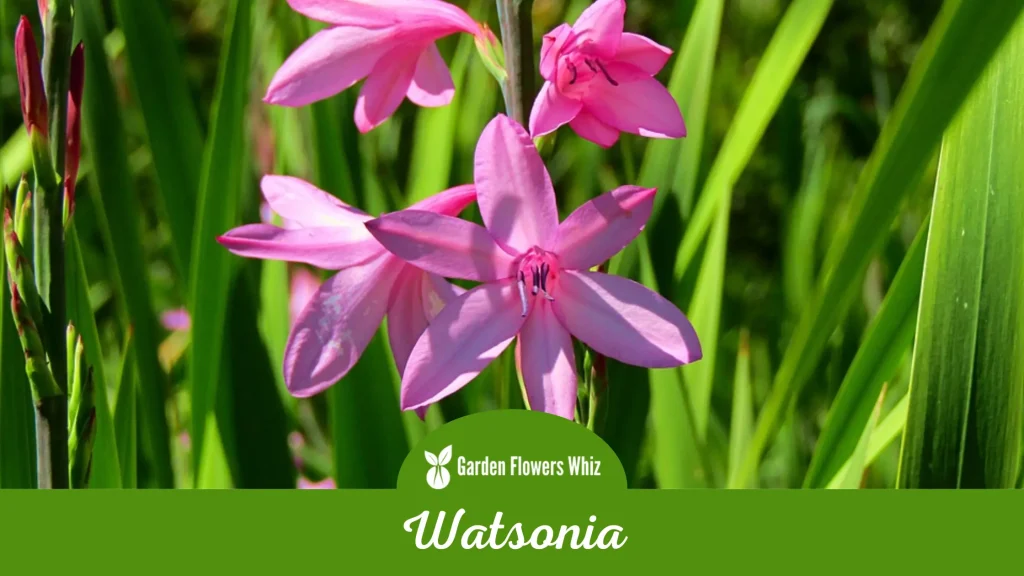
Watsonia is a genus of perennial flowering plants that is native to southern Africa. These plants are known for their striking, tall spikes of colorful flowers that bloom in the summer.
The flowers come in a range of colors, including pink, orange, red, and white, and are attractive to pollinators such as bees and butterflies.
Watsonia plants grow from bulbs and can range in size from a few inches to several feet tall, depending on the species. They prefer full sun to partial shade and well-draining soil.
Watsonia plants are popular in the garden for their long-lasting blooms and their ability to add height and drama to borders and beds.
However, it is important to note that some species of Watsonia can be invasive in some regions, so it is important to research the potential impact before introducing them to a new area.
24. Waterlily
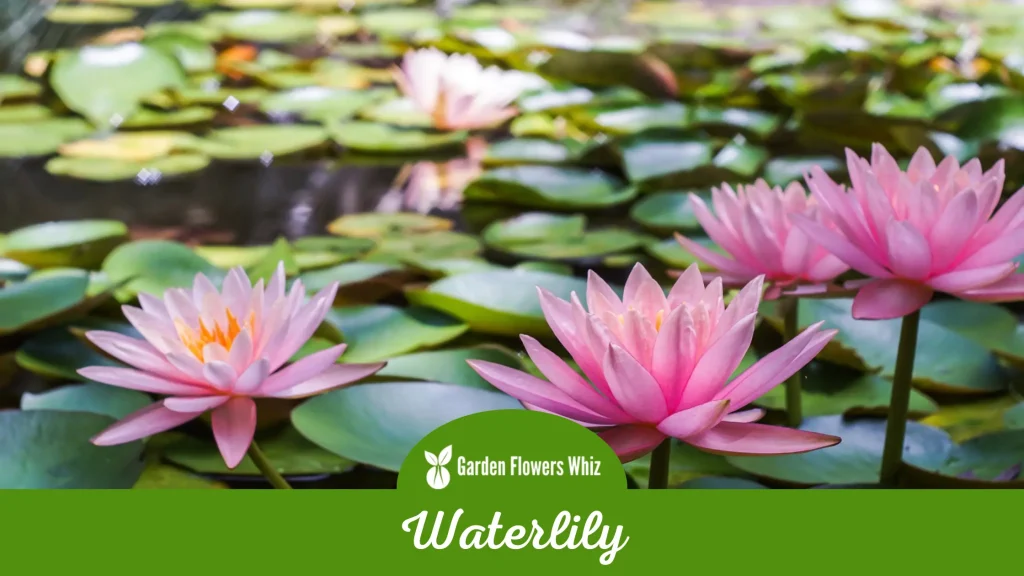
Waterlilies are aquatic plants that belong to the family Nymphaeaceae. They are native to various regions around the world, including North and South America, Europe, Africa, and Asia.
Waterlilies are known for their strikingly beautiful flowers, which come in a range of colors, including white, pink, yellow, and red.
Waterlily flowers are unique in that they grow on the surface of the water, with their roots anchored in the mud at the bottom of a pond or lake.
The flowers have large, round petals that are often fragrant, attracting pollinators such as bees and beetles. In addition to their ornamental value, Waterlilies also provide important habitats and food for fish, insects, and other aquatic animals.
Waterlilies are a popular choice for water gardens and ponds, as they add a peaceful and serene atmosphere to any outdoor space.
They require full sun and still water to thrive and are relatively low maintenance.
25. Water Avens
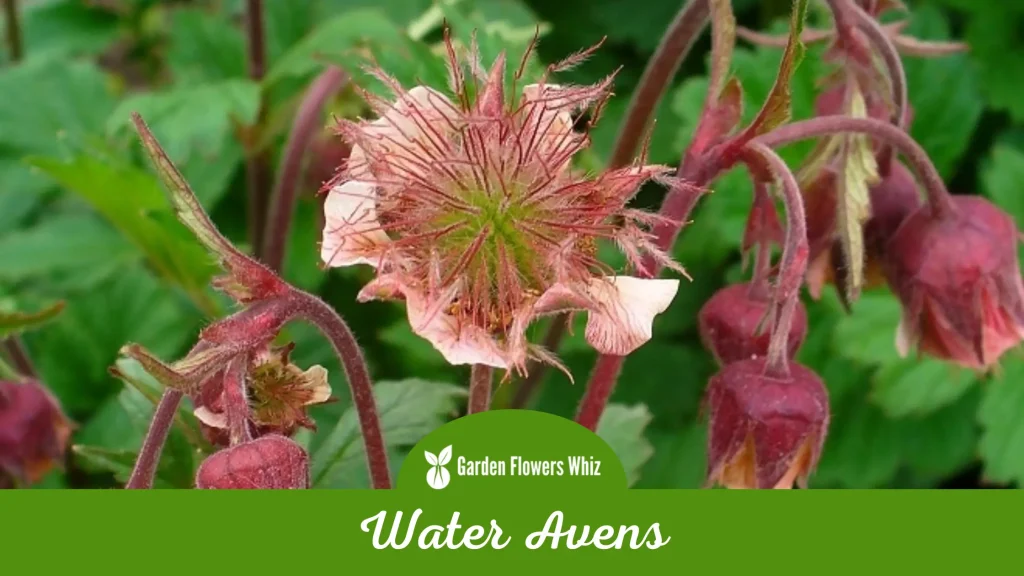
Water Avens, also known as Geum rivale, is a perennial herbaceous plant that is native to Europe and Asia. It is a member of the rose family and produces attractive, five-petaled, reddish-purple flowers that bloom in the summer.
The flowers are pollinated by bees and other insects and give way to feathery seeds that are dispersed by the wind. Water Avens are typically found in wet meadows, along streams and rivers, and in other damp habitats.
It prefers moist, rich soils and partial shade but can tolerate a wide range of growing conditions. Its attractive flowers and foliage, as well as its ability to attract pollinators, make it a popular choice for borders and beds.
26. Wandflower
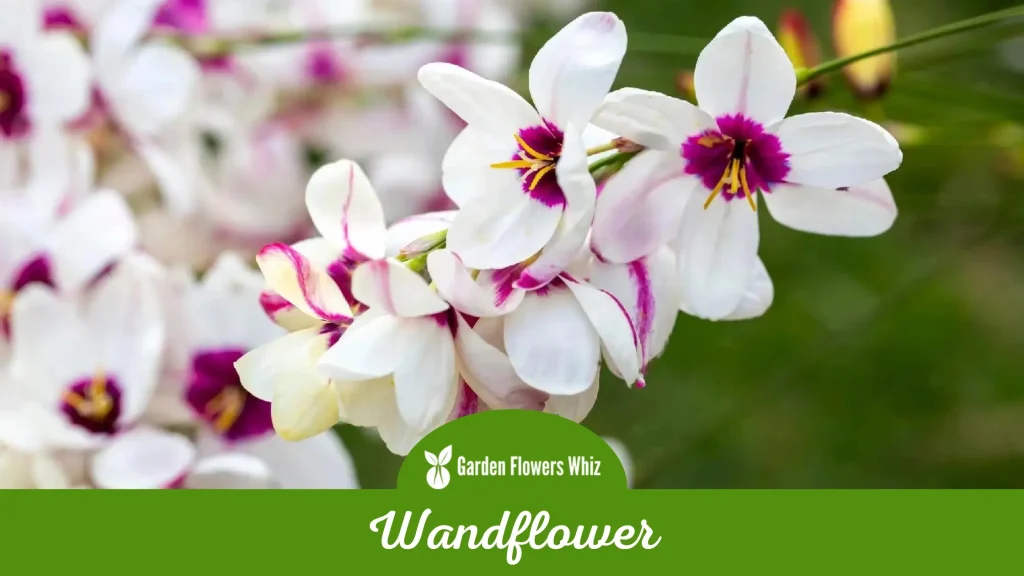
Wandflower, also known as Gaura, is a genus of perennial flowering plants that are native to North America. These plants are known for their tall, slender stems and their delicate, star-shaped flowers that bloom in clusters along the stem.
The flowers come in a range of colors, including pink, white, and red, and are attractive to pollinators such as bees and butterflies.
Wandflower plants prefer full sun and well-draining soil and are relatively low maintenance. They are a popular choice for gardens and landscaping because of their long blooming season and their ability to attract pollinators.
Wandflower plants are also often used in container gardens and in cut flower arrangements.
However, it is important to note that some species of Wandflower can be invasive in some regions, so it is important to research the potential impact before introducing them to a new area.
27. Wallflower
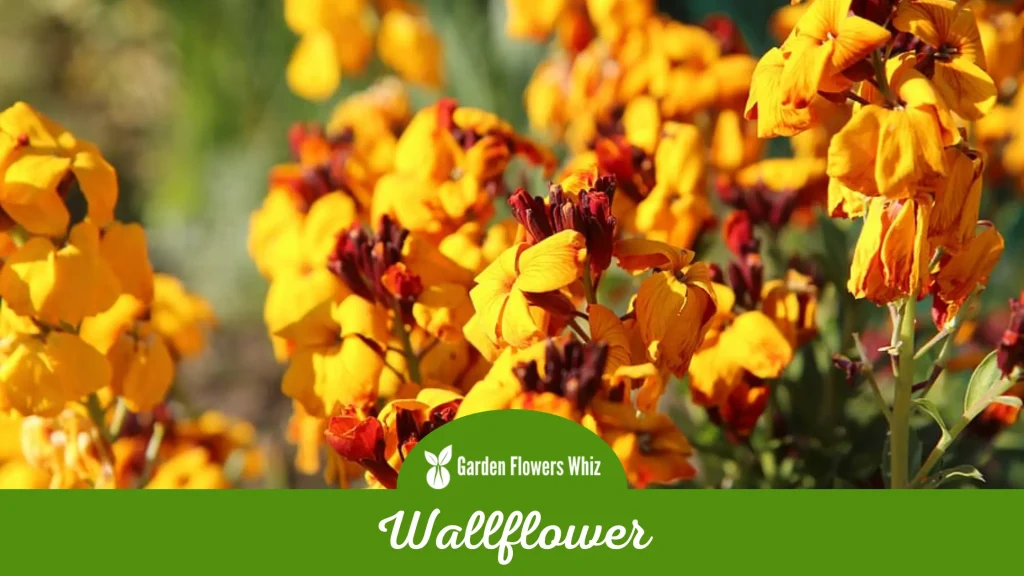
Wallflower, also known as Erysimum, is a genus of flowering plants that is native to Europe and Asia. These plants are known for their fragrant, brightly colored flowers that come in shades of yellow, orange, red, and purple.
Wallflowers are a popular choice for gardens and landscaping, as they bloom in the early spring and add bright color to beds, borders, and rock gardens.
Wallflowers are typically grown as biennials or short-lived perennials and prefer full sun and well-draining soil. They are relatively low maintenance and can tolerate a wide range of growing conditions.
Wallflowers are also popular among gardeners for their ability to attract pollinators such as bees and butterflies. They are a valuable food source for these important insects and can help to support local ecosystems.
In Summary
In conclusion, we have journeyed through the world of flowers that start with W and discovered a treasure trove of beauty, meaning, and significance.
From the enchanting charm of the Water Lily to the majestic grandeur of the Wisteria, each flower has its own unique qualities and symbolism that can inspire and enrich our lives.

Stacey Hernandez is a seasoned botanist with over 16 years of experience in the field. Her passion for plants and their intricate workings began at a young age, and she has since devoted her life to studying and understanding them.
Stacey’s expertise extends to a wide range of plant species, from delicate flowers to towering trees. As the founder of Garden Flowers Whiz, Stacey has created a platform for plant enthusiasts to seek guidance and advice.
Her website is a go-to resource for those seeking answers to their gardening dilemmas, whether it’s how to care for a particular plant or which species to choose for a specific climate.
